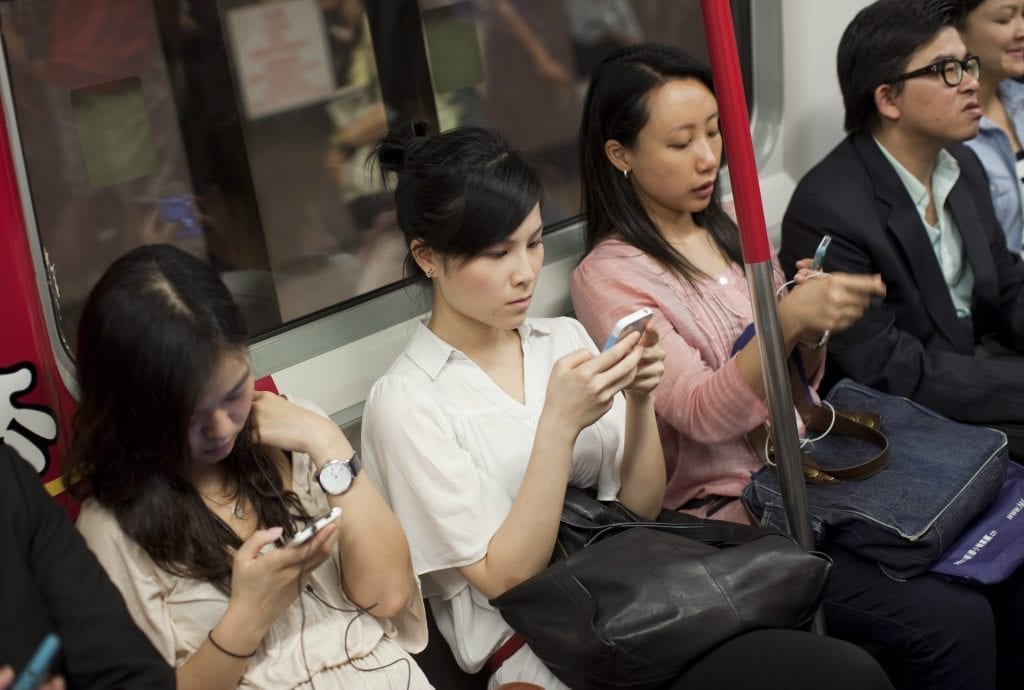
The explosive popularity of social media among Korean users is starting to subside amid a sense of fatigue on excessive information from the new medium, according to industry sources.
Data showed the numbers of users on major social media sites such as Facebook and KakaoStory are decreasing this year. According to market tracker Nielsen KoreanClick, the monthly active users of Facebook remained at 9.96 million in May, down 13.1 percent from 11.45 million a year earlier. That of Kakao Story was 12.59 million, down 17.76 percent from 15.31 million. Twitter also lost over 10 percent of its users in the month.
Facebook has been the most-used social media site in Korea, recording 5.6 billion minutes of cumulative use time on mobile devices in April, according to mobile app data researcher WiseApp. Naver’s Band came second with 2 billon minutes. Instagram had 1 billon minutes and Kakao Story had 900 million minutes.
WiseApp pointed out Facebook’s use time is continuing to decrease for the first four consecutive months of this year. Its use time was 6.6 billion minutes in January, 5.9 billion minutes in February and 5.8 billion minutes in March.
When the internet entered the business world in the 1990s, executives unaccustomed to the massive amount of information suffered from what is called “information fatigue syndrome,” which made making decisions difficult.
“Adding to the information fatigue syndrome, social media users increasingly face concerns over excessive or unwanted disclosure of personal data. They also experience a sense of relative deprivation as they compare their actual lives with the seemingly happy lives of others,” an internet service industry source said. Out of so-called “social media fatigue,” some of them stop using social media or unregister from the services, he said.
“Though it has not been medically defined, those who excessively indulge in social media can feel stressed and fatigued. Some of them undergo withdrawal symptoms when they are not able to access social media,” the source said.
An overflow of ads in social media timelines has also been pointed out as a cause of the user’s tiredness.
In particular, Facebook is increasingly strengthening its ad business on the social media platform, tapping into its 2 billion global user base. Besides Facebook, most social media platforms have introduced ad platform algorithms that automatically analyze user patterns and preferences to publish ads.
“Ad platform businesses on social media will definitely continue to grow on the spread of mobile devices and their use. Social media platform operators will come up with more elaborate advertising techniques to penetrate into the lucrative market,” a Seoul analyst said.
“It is notable that the number of ads that users have to watch is rapidly increasing while people have already started to access the services less. In the meantime, users may find the platform less intriguing.”
Meanwhile, new types of social media such as video-sharing Snapchat and Naver’s SNOW are gaining momentum in niche markets. Closed-doors social media services such as Blind are also popular.
Compared to mainstream social media platforms such as Facebook, Instagram and Kakao Story, Blind provides anonymous communication channels among members of the same industry or company.

